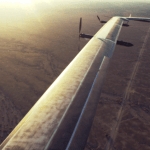
India’s biggest towns – Mumbai, Bengaluru, Delhi, and Chennai – weren’t really built to cope with the vaststrain that they now face thanks to increasing populace. traffic is a specific problem and a latestexcursion to the Surge conference in Bengaluru showed that matters are getting downright dystopianright here in Bengaluru, and not likely to get higher. Held at Manpho conference Centre on February 24th, the venue is positioned on a lane that noticed thousands of extra commuters headed on a narrowapproach avenue subsequent to Manyata Tech park, which already hosts around 80,000 of the city‘s techprofessionals. The resulting site visitors jam from the 2 huge intersecting tides of humanity felt like Kumbh Mela meeting Mad Max.
Cabs inched alongside through Bengaluru’s jammed through-lanes at what appeared to be 12.67kmph;you may get round quicker strolling. Hordes of motorcycles and scooters stoically bore the punishment of being caught below a tunnel, getting gassed by using vans and buses. The remaining kilometre changed into marked in crimson on Google Maps, and felt like a blood cell interior a large cardiac arrest. The Surgeconference reminded me of the city‘s worst trouble, some thing its tech employees bear on a dailyfoundation. it is exacerbated with the aid of an ineffectual metro system that covers a fragment of themetropolis. This is not a problem it really is going to be solved by means of an app, or a clever hack.something transpired on the Nasscom smart metropolis hackathon in 2015, it didn’t seem to help.
workfromhome_body.jpg
The quickest average vehicular movement velocity in India is 23kmph, consistent with records crunchedby using on-call for taxi aggregator Ola, so that is truly a problem that each one of India’s metro townsface. studies overseas display that widening the roads does not improve common street speeds either. So what works then? Matthew Turner, a US-primarily based economist reckons that congestion pricing, ashape of surge pricing carried out to roads may be extra powerful in curtailing avenue traffic.
A extra possible way to site visitors woes lies within the net, and it’s energy to clear up the ultimatemile problem. it’s a feasible alternative for a number of professions, specifically with net organizations, who can without difficulty put into effect far flung operating agreements with employees. Bandwidth isn’tas scarce as it was 5 years ago – lots of ISPs in our metros offer wired broadband at 100mbps speeds atless than Rs. 2,500 a month, publish taxes. A 50mbps connection with a seventy five GB facts cap willcost you around Rs. 1,six hundred, relying on the city you stay in. Uptime debts range – the final time Iskilled downtime was on January 21st. And getting round meaning both making an investment in asecond reference to a load balancing router, or getting a 4G dongle, and of path, a dependable energybackup. It appears like a quite important investment, however as compared to the fees concerned and the time and effort wasted each day to your trip, this seems quite affordable.
Many clever, leading tech agencies now work this way – the pinnacle 100 listing of organizations whooffer faraway jobs consists of Apple, Xerox, IBM, Amazon, IBM and SAP, so this technique should notseem all that heretical to a HR supervisor. the street infrastructure of our cities has been driven to itslimit, and is not likely to ever be capable of guide its residents. For clever cities, we want smartergroups too – it’s time internet startups and tech groups parent out at how they are able to make theirgroups sustainable, unburden their personnel from the drudgery of the daily go back and forth, and shoptheir energies for actual work.
download the devices 360 app for Android and iOS to live updated with the modern tech news, productcritiques, and special offers at the popular mobiles.
Tags: Bengaluru, Commuting, India, net, faraway paintings, Tech Jobs, traffic










